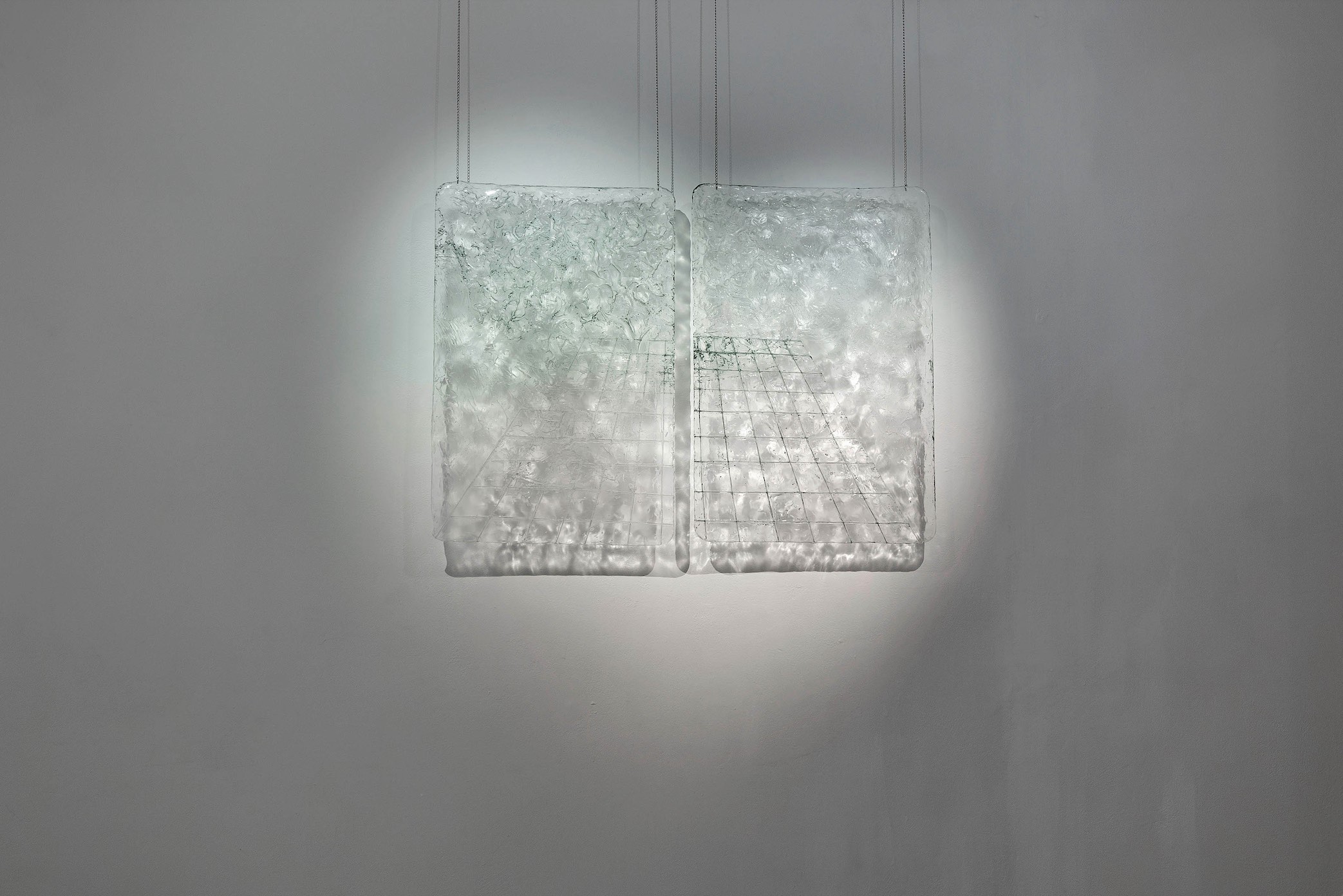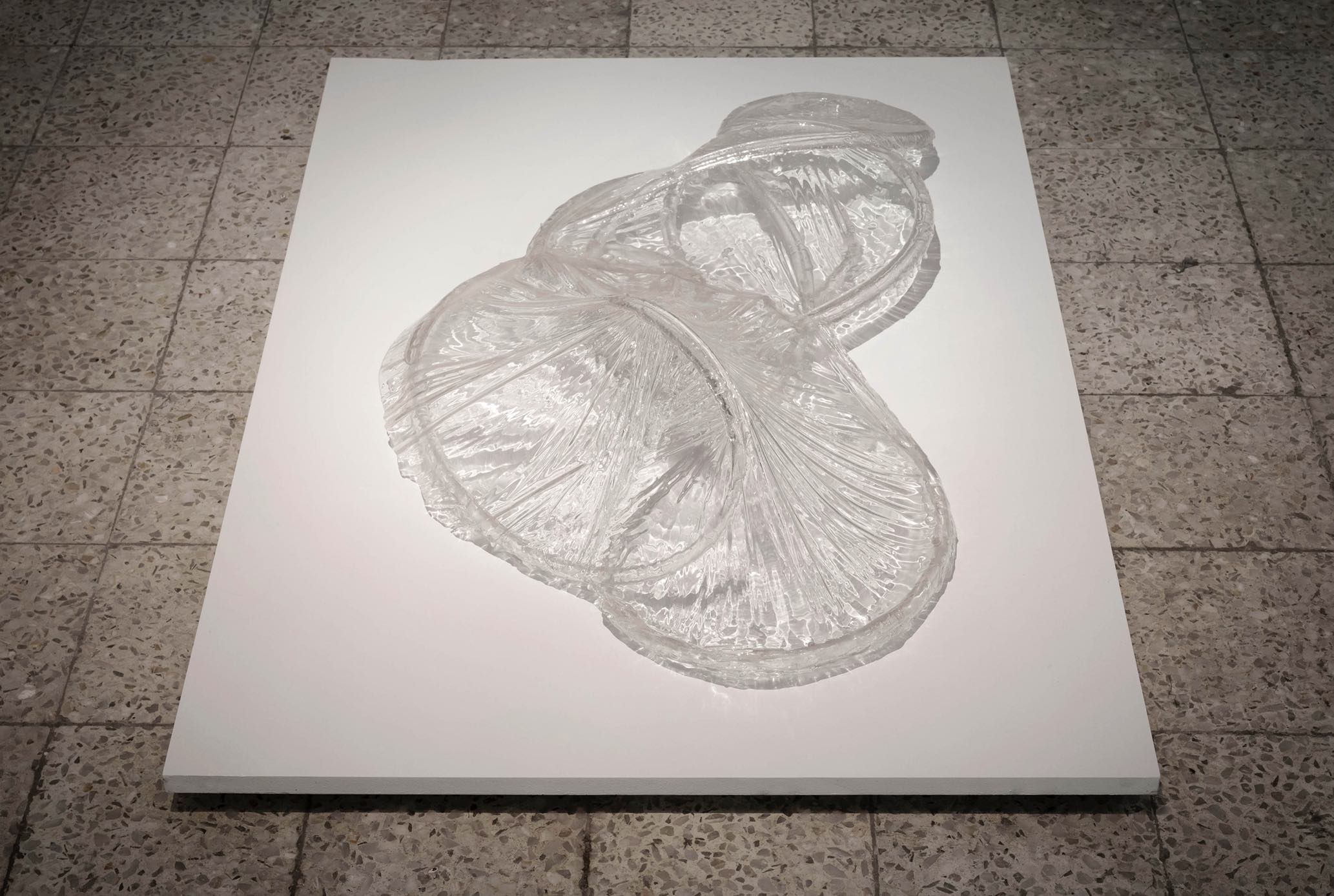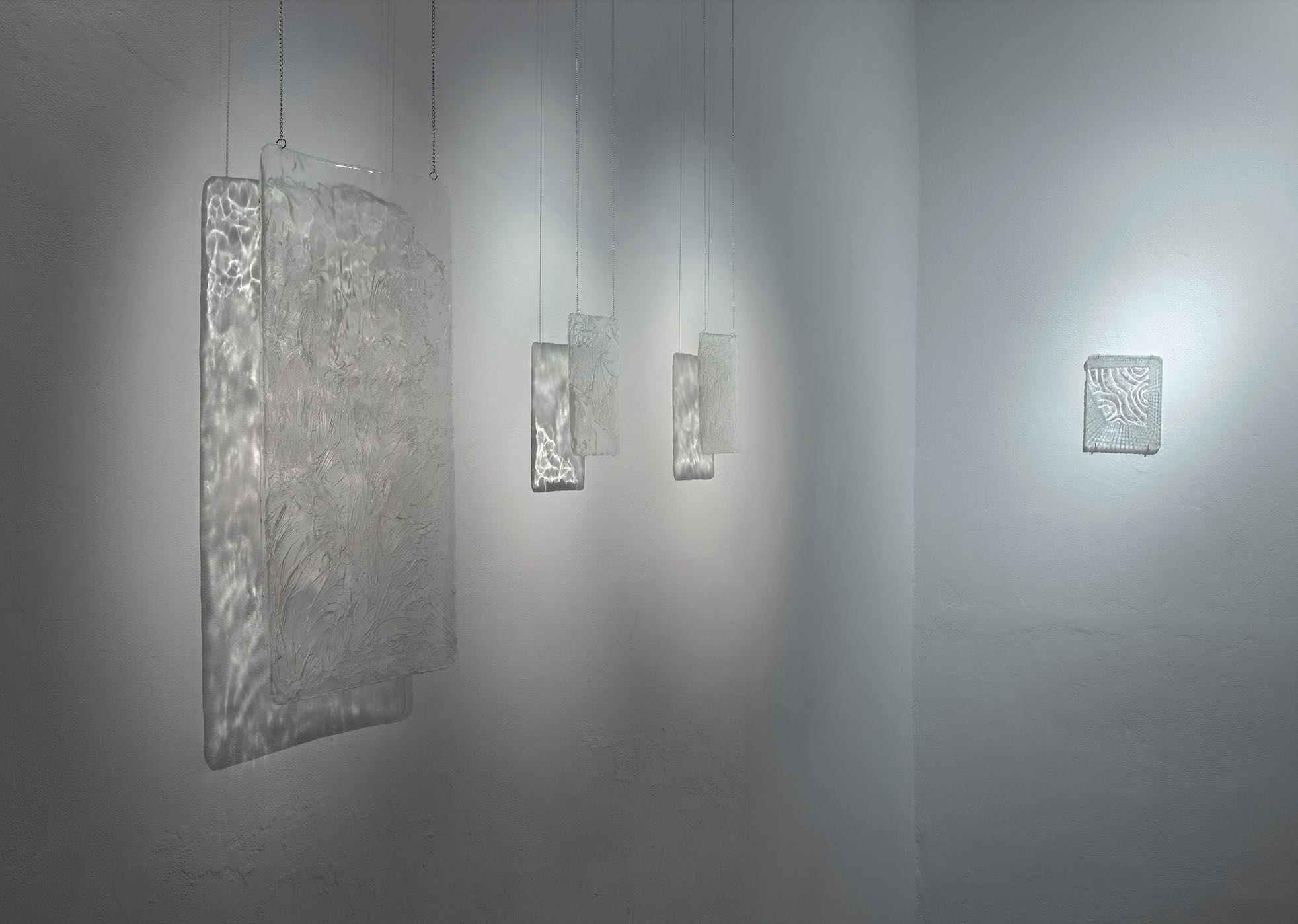
Review
Form and (Ab)use of the Sea: Octavio Gómez Rivero at Unión
by M.S. Yániz
Reading time
4 min
For Octavio, who else
The first thing I felt upon approaching Lengua Vítrea (Vitreous Tongue) was a pristine visual disorientation. I met the artist years ago under a regime of signs and statements around tropicality, excess, and the inexhaustibility of concepts. Color, strength, and warmth are the sensations I associate with Gómez Rivero’s work and perhaps with the person as well.
To enter Unión was to reconsider my ideas about the visible, the body, catastrophe, and the subject that sustains and produces images. It is necessary to begin by saying that the exhibition is almost invisible and is held up by the difference between what can be touched and what can be seen: the space of the wind and the imposture of water as a territory without measure. In order to see Lengua Vítrea you have to see yourself first. The door and the facade of the gallery Unión have been replaced by mirrors. Thus leaving your image on the surface. It begins with the argument that whoever sees art, builds images, and deciphers the world is—in principle—the self-reflexive modern subject. The same one that will swallow the territory. Breathing in front of oneself before submerging.
Once you pass through the mirror you enter a thought about the landscape. Octavio comes from Zihuatanejo and there he lived close-up the movements of deterritorialization involved in the devouring of nature and local forms of life by capital in favor of tourist whitewashing of the social and affective space of the sea and its circumstances.

This dispossession is a struggle over visuality. Who—and under what scheme of arguments—do we allow to appear in the wonderful landscape of tropical vacations? The global logic is to impose a specific regime of affects towards capital. The cataclysm of particularity.
The show, curated by Gaby Cepeda, is experienced in an enveloping way. On the gallery walls there are moments of the tropical landscape materialized in transparent varnish and hypersensitive to touch, but without texture. They are paintings (?) that are constituted by the surface tension between forms, matter, and space. A point of individuation where the idea of the image’s beginning (Cézanne: grid, shapes) and end (Ballard: drowned world: sustained end) crystallizes: the world: the existent.

A series of crystalline sculptures are arranged on the gallery floor. Striated surfaces with moments of swimming pools, water circuits, and perhaps condoms. A semantics of the biopolitical control of fluids. They are the material possibilities of liquid, of immeasurable desire, and of its visual containment. Behind the main room, but surrounding the entire sound gallery, there’s a video in which childhood, fantasy, and danger are recounted with a basis in the confession of a territorial way of life.
The pool springs from an abyss. From the hetero desire to separate—to govern!—the outside: the landscape, the sea, for purposes of the violent protection of the domestic. A hallucination and a betrayal inherited from the great men of yesteryear for whom one goes to sea and despises the mainland: convinced that only in everything lacking land resides the highest truth—of that something without any coast and as indefinite as God. We own the pool as fantasy and as longing.
There are art shows that close processes and times of life. Others, like the Lengua Vítrea, open them. It could be said that Gómez Rivero came to painting by reading and thinking with a basis in the body and stories. The philosophical excess triggered a confrontation between the materiality of the world and art: painting. The picture is presented as the material index of the sustained separation of history and forms of the world. Diagram as melancholy and future of the figures of childhood, desire, time, thought, and place.

The diagram is that cleansing zone that renders catastrophes on the painting. That is, it erases all previous clichés, even if they are virtual. It drags everything towards a catastrophe. Already within the hecatomb, the movements begin to emerge as aberrations in the matter that are resolved in art. Lengua Vítrea is a beginning where the distinction between poem and politics is erased. The aesthetic springs up annulling its visual function and confronts it as a sensitive statement of thought. An aesthetic whose object is without measure since it emerges from the relative and absolute movements of past and future worlds: the particular body and the regulative fictions that constitute and govern. That seems to be the unprecedented experience to which Gómez Rivero has readied us.
Lengua Vítrea can be viewed until March 25. Visits by appointment.
Translated to English by Byron Davies
Published on March 3 2023